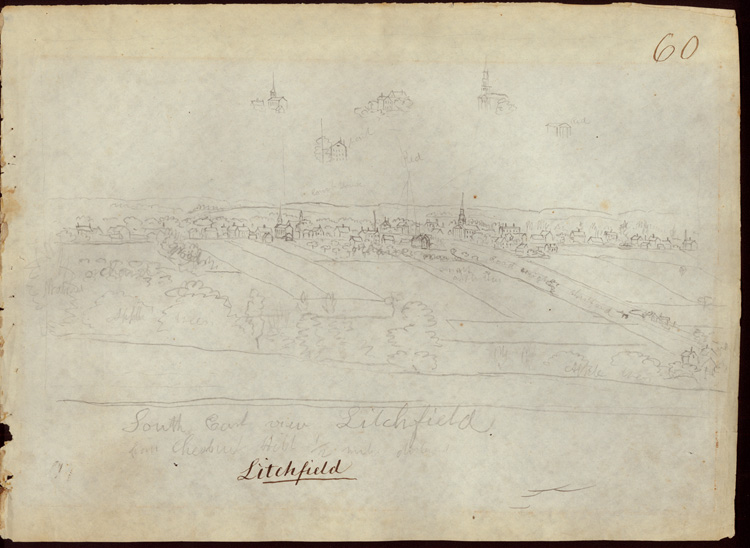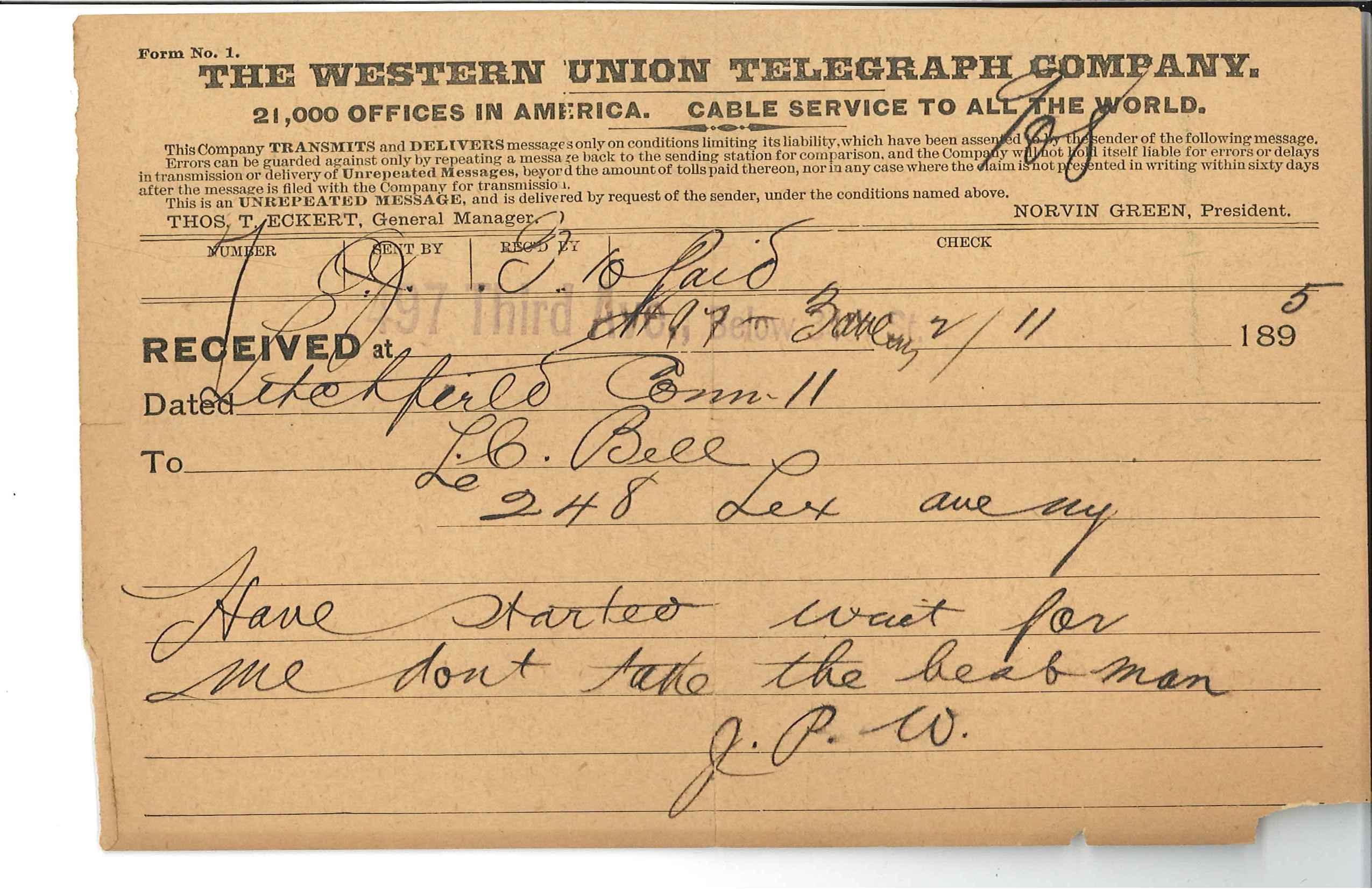My name is Emilie Kracen and this summer I have had the opportunity to intern at the Litchfield Historical Society under archivist Linda Hocking. Today being my last day with the Historical Society, I have decided to write a post to tell you a little about what I did here.
My main task has been to process collections and create online finding aids for them on Archon. The process begins with the raw collections in the state in which they arrived at the archives, in little or no order. I started by reading through most of the documents and organizing them so they are easy to use. Creating the finding aid was an interesting task, as I was forced to think like a researcher and create descriptions that would illustrate the important aspects of the collection while helping the reader determine if the documents would be of use in their investigation. Since Archon is essentially an online, searchable card catalogue, I tried to keep in mind specific search terms that would lead researchers to the correct collections. The process would have been simple, but for a new version of Archon and various updates which took place during the summer, giving those working with the program a crash course in re-learning how to navigate the site!
The most interesting and rewarding part of the process was handling and reading the actual documents. I am a historic preservation major, and I plan to attain a museum studies minor and pursue a career in artifact conservation. Working with the old documents, and even the newer ones, gave me more insight into this aspect of the museum field. The first collection I worked on was the Grant Papers, dated in the mid-nineteenth century, and the documents were somewhat damaged and very fragile. I felt privileged to be able to work with the documents first-hand, since after the processing much of the physical collection will be off-limits to researchers due to fragility. It is exciting to be able to handle objects that people who lived decades or centuries ago used every day! I also learned some basic and valuable conservation techniques along the way. For example, I learned that simple objects like newspapers (which are very acidic), paper clips, tape, and staples can, over the years, cause damage to the documents around them.
The content in the collections was very interesting as well. The letters in the Grant collection, for example, give a very detailed and fascinating account of a traveling teacher/preacher, including a fair amount of culture shock when he moved from the relatively small New England town of Litchfield to pre-Civil War Virginia. The second collection I worked with, the Captain H. S. Jones Collection, included information on the creation of the historic district in Litchfield. As a historic preservation major, it was interesting to read through the struggles of launching a historic district in an area where none previously existed.
Finally, I enjoyed researching the creators and creating biographies of them, putting together in one place the various pieces of information, including my own findings from the collections themselves. My research skills were improved, and even though scrolling through reels of microfilm for an obituary or a marriage announcement was tedious at times, it was exciting when I would stumble upon the very information I was looking for and add it to a more complete account of the lives of these historic figures.
Overall, my work at the Historical Society has been fun and rewarding, giving me an up-close and personal look at the workings of a small museum.



